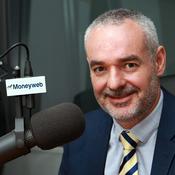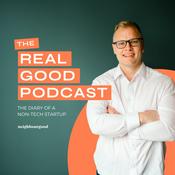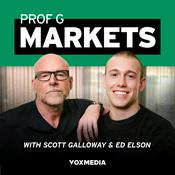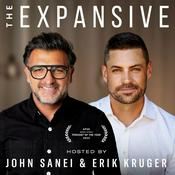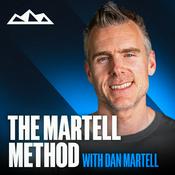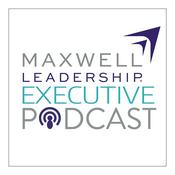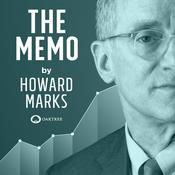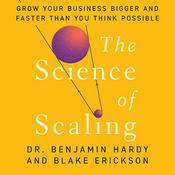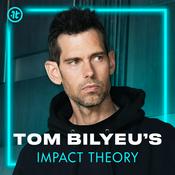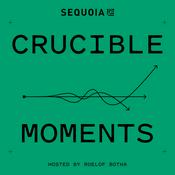Available Episodes
5 of 75
- Why the Next AI Revolution Will Happen Off-Screen: Samsara CEO Sanjit BiswasSanjit Biswas is one of the rare founders who has scaled AI in the physical world – first with Meraki, and now with Samsara, a $20B+ public company with sensors deployed across millions of vehicles and job sites. Capturing 90 billion miles of driving data each year, Samsara operates at a scale matched only by a small handful of companies. Sanjit discusses why physical AI is fundamentally different from cloud-based AI, from running inference on two- to ten-watt edge devices to managing the messy diversity of real-world data—weather, road conditions, and the long tail of human behavior. He also shares how advances in foundation models unlock new capabilities like video reasoning, why distributed compute at the edge still beats centralized data centers for many autonomy workloads, and how AI is beginning to coach frontline workers—not just detect risk, but recognize good driving and improve fuel efficiency. Sanjit also explains why connectivity, sensors, and compute were the original “why now” for Samsara, and how those compounding curves will reshape logistics, field service, construction, and every asset-heavy industry. Hosted by Sonya Huang and Pat Grady, Sequoia Capital--------38:21
- The Rise of Generative Media: fal's Bet on Video, Infrastructure, and Speedfal is building the infrastructure layer for the generative media boom. In this episode, founders Gorkem Yurtseven, Burkay Gur, and Head of Engineering Batuhan Taskaya explain why video models present a completely different optimization problem than LLMs, one that is compute-bound, architecturally volatile, and changing every 30 days. They discuss how fal's tracing compiler, custom kernels, and globally distributed GPU fleet enable them to run more than 600 image and video models simultaneously, often faster than the labs that trained them. The team also shares what they’re seeing from the demand side: AI-native studios, personalized education, programmatic advertising, and early engagement from Hollywood. They argue that generative video is following a trajectory similar to early CGI—initial skepticism giving way to a new medium with its own workflows, aesthetics, and economic models.Hosted by Sonya Huang, Sequoia Capital--------1:02:18
- Why IDEs Won't Die in the Age of AI Coding: Zed Founder Nathan SoboNathan Sobo has spent nearly two decades pursuing one goal: building an IDE that combines the power of full-featured tools like JetBrains with the responsiveness of lightweight editors like Vim. After hitting the performance ceiling with web-based Atom, he founded Zed and rebuilt from scratch in Rust with GPU-accelerated rendering. Now with 170,000 active developers, Zed is positioned at the intersection of human and AI collaboration. Nathan discusses the Agent Client Protocol that makes Zed "Switzerland" for different AI coding agents, and his vision for fine-grained edit tracking that enables permanent, contextual conversations anchored directly to code—a collaborative layer that asynchronous git-based workflows can't provide. Nathan argues that despite terminal-based AI coding tools visual interfaces for code aren't going anywhere, and that source code is a language designed for humans to read, not just machines to execute. Hosted by Sonya Huang and Pat Grady, Sequoia Capital--------40:13
- How End-to-End Learning Created Autonomous Driving 2.0: Wayve CEO Alex KendallAlex Kendall founded Wayve in 2017 with a contrarian vision: replace the hand-engineered autonomous vehicle stack with end-to-end deep learning. While AV 1.0 companies relied on HD maps, LiDAR retrofits, and city-by-city deployments, Wayve built a generalization-first approach that can adapt to new vehicles and cities in weeks. Alex explains how world models enable reasoning in complex scenarios, why partnering with automotive OEMs creates a path to scale beyond robo-taxis, and how language integration opens up new product possibilities. From driving in 500 cities to deploying with manufacturers like Nissan, Wayve demonstrates how the same AI breakthroughs powering LLMs are transforming the physical economy. Hosted by: Pat Grady and Sonya Huang--------41:36
- How Google’s Nano Banana Achieved Breakthrough Character ConsistencyWhen Google launched Nano Banana, it instantly became a global phenomenon, introducing an image model that finally made it possible for people to see themselves in AI-generated worlds. In this episode, Nicole Brichtova and Hansa Srinivasan, the product and engineering leads behind Nano Banana, share the story behind the model’s creation and what it means for the future of visual AI. Nicole and Hansa discuss how they achieved breakthrough character consistency, why human evaluation remains critical for models that aim to feel right, and how “fun” became a gateway to utility. They explain the craft behind Gemini’s multimodal design, the obsession with data quality that powered Nano Banana’s realism, and how user creativity continues to push the technology in unexpected directions—from personal storytelling to education and professional design. The conversation explores what comes next in visual AI, why accessibility and imagination must evolve together, and how the tools we build can help people capture not just reality but possibility. Hosted by: Stephanie Zhan and Pat Grady, Sequoia Capital--------43:38
More Business podcasts
Trending Business podcasts
About Training Data
Join us as we train our neural nets on the theme of the century: AI. Sonya Huang, Pat Grady and more Sequoia Capital partners host conversations with leading AI builders and researchers to ask critical questions and develop a deeper understanding of the evolving technologies—and their implications for technology, business and society.
The content of this podcast does not constitute investment advice, an offer to provide investment advisory services, or an offer to sell or solicitation of an offer to buy an interest in any investment fund.
Podcast websiteListen to Training Data, A Bit of Optimism and many other podcasts from around the world with the radio.net app
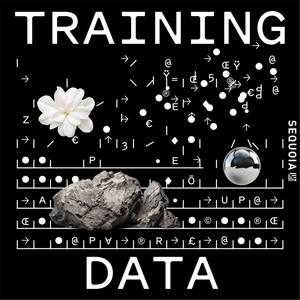
Get the free radio.net app
- Stations and podcasts to bookmark
- Stream via Wi-Fi or Bluetooth
- Supports Carplay & Android Auto
- Many other app features
Get the free radio.net app
- Stations and podcasts to bookmark
- Stream via Wi-Fi or Bluetooth
- Supports Carplay & Android Auto
- Many other app features


Training Data
Scan code,
download the app,
start listening.
download the app,
start listening.

